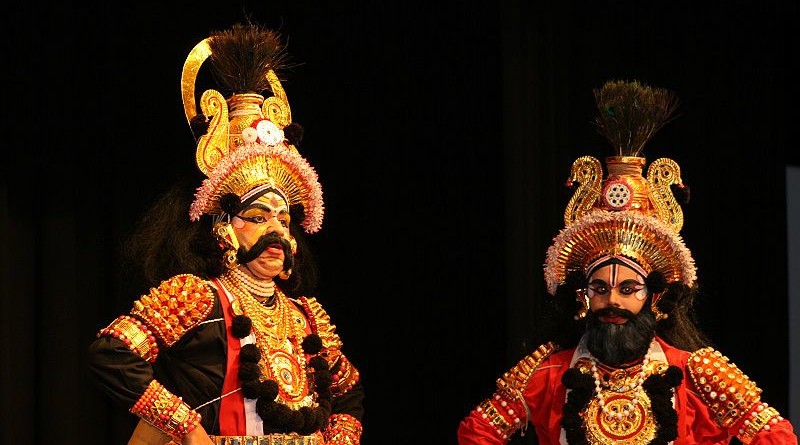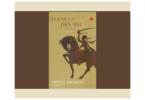Storytelling takes different forms and employs different mediums across the globe. In India, every state and district follows its own signature style of storytelling. While some narrate, others employ props like puppets, masks and even musical instruments. Some stories are told through the medium of dance and music. One such colorful and vibrant form of storytelling is Yakshagana.
The Origins of Yakshagana?
Yakshagana literally translates to the song of the yaksha. In Indian mythology, yaksha are nature-spirits, guardians of natural treasures hidden inside the earth. Yakshagana rose out of the Bhakti movement in South India, a movement between 7th and 10th centuries patronizing the Gods Vishnu and Shiva, as an amalgamation of the classical dance forms and folk art. However, it rose to prominence as an art form in the 15th century. Traditionally, the performance used stories drawn from the Puranas, the Ramayana and the Mahabharata. In the past century, the scripts have become more inclusive with plays in Kannada and Telugu languages being added as well.
Yakshagana – The Performance and The Performers
Yakshagana is performed in dance-drama style, blending an amalgamation of classical and folk dance with dialogue seamlessly. The performance begins at twilight, typically in the open air, and lasts through the night. The performers are divided into the “himmela” (Kannada for ‘the group at the back’) – a background group comprising of the musicians and a “bhagvatha”, and the “munmela” (Kannada for ‘the group in the front’) – the performers who enact the story through dance and dialogue. The bhagvatha acts as the storyteller, introducing the story to the audience in the first act. The performers are all male, with the stree vesha or female roles also performed by males.
A characterizing feature of Yakshagana is the vibrant and colorful costumes, the elaborate make-up, head-dress and masks. One can make out the standard character types from their costume and color of make-up. For e.g. black and red make-up indicates a demonic figure, while pinkish yellow and a teardrop shaped turban is reserved for the heroic character.
You may also be interested in Harikatha – The Art Of Storytelling In Religious Discourses
Bhagvatha – The Storyteller in Yakshagana
The bhagvatha plays a key role in a Yakshagana performance. He is responsible for directing the production and his is the first act on the stage, the moddalane vesha, narrating the story through a combination of dialogue and singing, often infusing it with humor. He uses a finger cymbal, called a thaala to keep the beat, and may also be supported by a harmonium. In essence, he is similar to a narrator in any play, except that his narration may even accompany the performance, portraying the story as it is being narrated. While every performer in a Yakshagana performance has a role to play, it is the bhagvatha who holds the story together.
Yakshagana in the 21st Century
The earliest recorded written evidence of Yakshagana dates to 1556 CE, found on an inscription in Bellary District, Karnataka. As such, this performing art is said to have originated in north Karnataka. The 19th and 20th centuries have seen Yakshagana moving away from the traditional form to become more accommodating. Sanskrit plays, local folklore and fictional stories have been added to the existing stories used in the performances. The performance time has been reduced from an all night event to 3 hours, although the 12 hours shows are not uncommon. The late 20th century also saw female artists perform the Yakshagana. The Kannada writer and Yakshagana artist, K. Shivaram Karanth, was responsible for experimenting with this storytelling form, which led to its wider acceptance and popularity.
Yakshagana melts the boundaries between storytelling, dance, dialogue and acting. But at its core it is still a story being told to an, often enraptured, audience. The past few decades have seen serious efforts by private and public bodies alike to revive this dying form of storytelling.
Also read The Mummers – Celtic & Anglo-Saxon Storytelling With Roots In Egypt
Here’s a clip from a Yakshagana performance, showing the episode from Ramayana, where a docile Shurpanakha, the demon king Ravana’s sister, approaches Lakshmana, whom she desires. Lakshmana makes fun of her and cuts off her nose. She then goes to Rama and Sita and threatens them that she will be avenged by her brother.
To read about more storytellers, visit our “Meet The Storytellers” section.
(Featured Image Source: Creative Commons used under a CC BY 3.0 Unported License)





